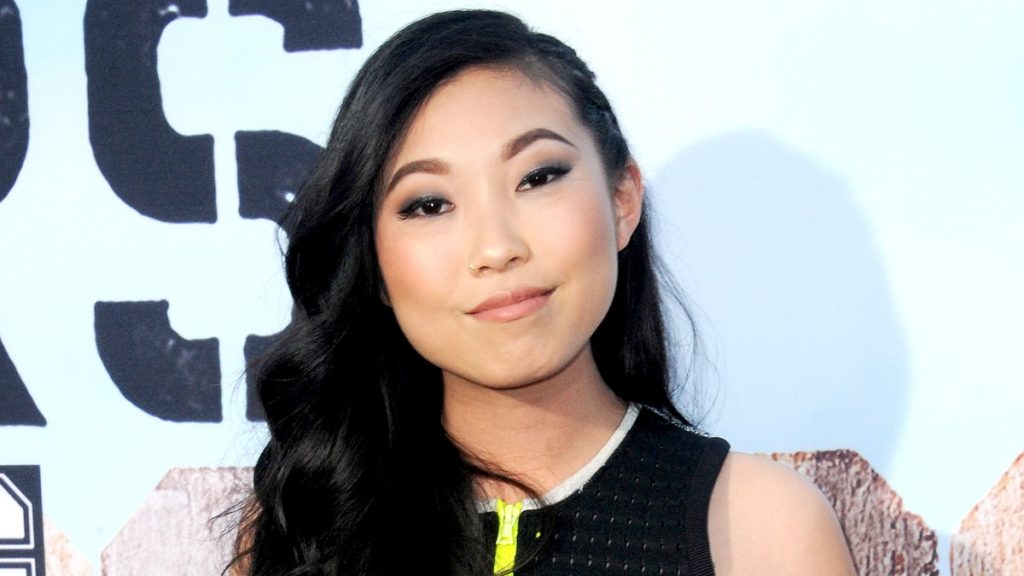Editor’s note: this is a longer version of John Wood Jr.’s Braver Angels Member Newsletter of Sunday, Feb. 13th. -LNP
I received a message recently from a friend of mine at a prominent university. The campus was in uproar over incidents of anti-Asian hate speech by a member of the student body. It was interesting to note, however, a subtle divide—between Asian student activists assertively demanding change from the administration alongside traditional activist groups, and traditional Asian student organizations who eschewed demonstration in favor of quiet talks with college officials as a means of addressing the problem.
That did not surprise me. It points to the delicate relationship that exists between Asian-American identity, black culture, the culture of black activism, and black cultural activism’s power to adjust mainstream American social norms as effectively as popular black culture has otherwise inspired them.
Joe Rogan is no stranger to controversy. But after already having diplomatically avoided explicit contrition in response to charges of spreading misinformation with respect to the COVID-19 vaccine, the world’s most popular podcaster then offered a fulsome apology for his history of using the N-word. A highlight reel of Rogan liberally employing the term was compiled and published in light of the other controversies surrounding him. Of the video, Rogan said “it looks f***ing horrible, even to me. I know that to most people there is no context where a white person is ever allowed to say that word…I agree with that now.”
I imagine Mr. Rogan is perfectly sincere in his apology. Given that it seems he never used the term maliciously, some are arguing such repentance should not be necessary. Whether necessary or not however, Rogan’s apology demonstrates the immense social pressure that comes down upon Americans for racist behavior generally and perhaps for anti-black racism in particular. This has to do with the fact that the modern antiracist movement, while intersectional, is largely a product of a fierce tradition of activism in Black America that has come to inform the larger culture of social justice for all marginalized groups in the present day. This leads to sensitive cultural conflicts that most Americans never consider, including between African-Americans and Asian-Americans.
Another celebrity who has recently had to navigate very different charges of anti-blackness is the popular actress Nora Lum, popularly known as “Awkwafina” (Crazy Rich Asians, Shang-Chi and the Legend of the Ten Rings.) After she called out the longtime Hollywood practice of casting Asian actors to fit clumsy stereotypes using stereotypical accents, Awkwafina came under fire by activists, including many African-Americans, for hypocrisy. She herself is widely understood to employ a “blaccent”— simply put, many people thinks she talks Black. It is a part of the personality that has gained her success in the entertainment business. And many now feel this success is exploitative.
It’s true that Nora Lum speaks in a dialect that could easily be called black, but it might be more appropriate to call it a dialect inspired by Hip-Hop culture. Hip-Hop is so closely related to urban black culture, in the modern American mind, that there is a degree to which all this may sound redundant.
Yet as Awkwafina pleaded the purity of her intentions, as Rogan did in his response, she made reference to her “immigrant background,” “the movies and TV shows I watched,” and “the children I went to public school with” as allowing her “to carve out an American identity.”
She went on to say: “…as a group, Asian-Americans are still trying to figure out what that journey means for them—what is correct and where they don’t belong.”
In her Twitter response Awkwafina went out of her way to express deep empathy for the black experience and what she feels to be the reality of systemic racism, without ever actually apologizing for her way of speaking. That left many dissatisfied. But Awkwafina grew up in Queens in the 90’s and early 2000’s. She was surrounded by black and brown kids listening to Hip-Hop, melting into the culture that enveloped her and finding a home in it. On some level, is she now being asked to apologize for her very identity? Is her very identity on some level exploitative appropriation of the culture of others?
On the group level the relationship between Black Americans and Asian-Americans is more complicated than many people realize. As a young black boy in a multicultural suburb, it just so happened to be the case that most of my closest friends were Asian. I was surrounded by Korean kids who excelled on the basketball court and by Filipino kids who rapped and dressed in baggy pants. For that matter, I also knew white kids who had “n-word passes”—white kids who wielded an “urban” dialect and used the n-word freely within their circle of black friends (and for Joe Rogan, a person who established himself as a young comic in the close company of black comedians like Dave Chappelle, I can imagine how his comfort with the term might have evolved).
All of this was incredibly normal to me, given where I grew up. As I grew older, and moved into a predominantly black neighborhood, the tensions between Korean (and Indian and Pakistani) shop owners and black people in the community became visible to me.
“Can’t stand these Asians!” I recall a middle-aged black man in front of a liquor store shouting following an argument with the attendant or store owner. “They wanna hide behind us in prison, but treat us like sh*t on the outside!”
He was referring to a phenomenon where, in prison life, because tribal associations are so often necessary for survival, outnumbered Asians will sometimes ally themselves with black prisoners against other groups. (Similarly, whites who have no history of white supremacist prejudice or affiliation have been known to join ranks with white supremacist groups in prison as a matter of survival.) The fact that Asians own far more businesses per capita in inner-city black communities sets the stage for the friction “on the outside” that the man referred to.
But outside of poorer communities, these tense dynamics between blacks and Asians often persist, and along similar lines. Like other groups who advocate for equity and justice within the broader rubric of antiracism, and like other groups who have been historically marginalized in American history, Asian activists have pledged themselves in a common cause with African-Americans in intersectional coalitions aiming at social justice. Yet immigrant Asian communities have embraced assimilation into mainstream academic and institutional culture traditionally, an approach that, in spite of racism, has represented a path forward for Asians in the United States. Meantime many black Americans feel (for many historical reasons) that this approach has been unavailable to most people of our hue. As such, the idea of Asians as the “model minority” points to a deeper comfort or investment in the norms and structures of white society that make Asians unreliable or even opportunistic allies in the larger fight for racial justice. Some Asian-American student activists have even said this about their own communities.
Yet who is to judge? There are no villains in this story. It is true that African-American culture—through food, song, dance and so much more—has authentically inspired non-black Americans and enriched American and even global society, even as many African-Americans have felt that their very culture has been commodified, diminished and exploited by powers that neither truly understand nor respect it. It is true that Asian-Americans have an American experience that has been marked by the bitter sting of racial oppression in ways that are reminiscent of the struggles of African-Americans, while also having a unique (and, within the catchall category of “Asian,” incredibly diverse) American experience unto themselves that differentiates the Asian community’s relationship to black and white America from black and white Americans’ relationship to each other. And it is true that Asian-Americans, white Americans, and all Americans are grappling with shifting norms over race and language that present no easy answers as to how we reconcile cultural sensitivity with our right to free expression when we feel our hearts are in the right place.
This is why, as important as it may be for us to reflect on or challenge the behavior of others, we must also we abide by the moral wisdom of Martin Luther King Jr., who wrote “…the important thing about a man is not his specificity but his fundamentum, not the texture of his skin but the quality of his soul.” That may sound like just another King quote. But think about its implications; that the quality of one’s soul bespeaks the purity of one’s intentions. It does not mean that one does not make mistakes. But we all make mistakes; a changing world ensures that we will continue to make them, and that they will not be easy to see in the moments when they are made. This is true for black, white, Asian, Latino and all of us alike. We all must hold the balance. When we believe we are right we must advocate, or defend ourselves, with the courage of our convictions. When we see that we are wrong, we must have the humility to apologize. But most of all, when others acknowledge their mistakes, we must have the decency to forgive. In an ever more diverse and complicated society such as ours, it is only through the balm of understanding and forgiveness that we may nurture our way towards liberty and justice for all.






12 thoughts on “Awkwafina and the Conflicts of Assimilation”
You articulate issues in a way that helps us to grapple with the complicated realities and also negotiate our way through without just giving up. I.e., “I can never get this right so I’ll just leave the issue to those who see themselves as having a corner on the truth.” Recognizing the many nuances is important to compassionately and humbly working our way forward.
Well said, my heart aches with all the division yet our soul grows when humble ourselves , forgive another and recognize we all make mistakes. We are humans created by by Our God who calls us His sons and daughters, regardless of the color of our skin.
Thank you John for your kind words.
Thank you, John for explaining dynamics I had no clue about. The questions you raise here are all ones we have to face and answer. Until we do, conflict will continue. Our cultural and political landscape is not letting us off the hook. You and BA are embodying facing up to these difficult questions and modeling the way for the rest of us. I appreciate all that you are doing, thank you!
Once again, John Wood Jr., you’ve expressed a perspective in the American conversation, one that rings true. The insight I gain from the account of your experience leads to a new understanding. The MLK quote was new to me, and I thank you for sharing it. There are no easy answers, but it is incumbent upon me to ask “Is the speaker’s heart in the right place?” (Borrowing your line from the earlier paragraph.) The thing that keeps me hopeful is just that — a faith in the best intentions of our neighbors.
That is a fantastic essay, John! I never thought I would want to read that much about this subject, but you make a strong case for why this is such a nuanced issue. Here are a few things which occurred to me while reading, for anyone who made it to the end of your article and still wanted more 😉
1. It is becoming more and more apparent that “mistakes” of offensiveness are in the eye of the beholder, as cancel culture begins to swallow its own tail. As you point out with Awkwafina, censuring her is arguably oppressing her own civil liberties. How do we create a universal lexicon of acceptable speech, when the rules are getting more complex all the time?
2. Joe Rogan is hugely popular because he has the temerity to apologize for his own prior errors of judgment, both with offensive language and dubious scientific claims, while defending the right to free speech that we all benefit from. The outsized furor over his behavior seems to represent what I hope is a growing frustration with [and eventual rejection of] this McCarthyist phenomenon of silencing those we disagree with–or should I say some vocal minority disagrees with. There’s a fine line between democracy and tyranny of the majority; but for some reason the angry demands of a few loud members of “approved” minority groups slip under the radar. The fact that there is so much debate over whether [and which] Asians constitute such a minority deserving special protection, or whether they are now “honorary” white folks like the Irish, Italians, and Greeks, illustrates how ridiculous this cultural fad has become. [Note that I refrained from capitalizing the word “white” so as not to offend anyone.]
3. I find it deeply ironic that some of the caucasian counter-culture heroes I grew up with, who got famous pointing out the hypocrisy of racist American behavior under the guise of “polite society,” would now all find themselves on the wrong side of today’s thought police. And not only people like Mort Sahl, Lenny Bruce, and George Carlin. How would Richard Pryor’s act hold up under this withering scrutiny? How about Thomas Sowell, who has managed to alienate just about everyone during his lifetime, by exposing the unsavory virtue signaling in social entitlement programs.
As Mort Sahl said, “If you maintain a consistent political position long enough, you’ll eventually be accused of treason.” And as Lenny Bruce proved, it’s the suppression of ideas which gives them power. I guess most Americans are too young/ignorant to remember the lessons of the French Revolution, or they weren’t forced to read A Tale of Two Cities in high school. How did cancel culture turn out for the Jacobins again?
Hi John,
Thank you for the first article that I have come upon concerning the problem of dealing with racism between the Black and Asian communities. I direct a program in East Harlem, and it is refreshing to see an article that isn’t Eurocentric when dealing with this topic. Much of the work we do is addressing racist attitudes not just between our Black and Asian brothers but between the Mexican and Black communities as well as antisemitism in both communities. These are real problems, and they can really be overcome with direct dialogue and honest communication.
Such a reasoned and reasonable response to this struggle we all have confronting racism in the US. About to finish reading Jonathan Haidt’s and Greg Lukianoff’s book, “The Coddling of the American Mind: How Good Intentions and Bad Ideas Are Setting Up a Generation for Failure,” I am reminded of the nine most common cognitive distortions (derived from cognitive behavioral therapy) outlined in the book; they contribute to our failure to communicate clearly and respectfully with each other:
1. Emotional Reasoning: letting your emotions guide your interpretation of reality.
2. Catastrophizing: focusing on the worst possible outcome and seeing it as most likely.
3. Overgeneralizing: if it happens once, it will happen always.
4. Dichotomous Thinking: known also as black-and-white thinking.
5. Mind Rreading: assuming with little evidence.
6. Labeling: follows from dichotomous thinking .
7. Negative Filtering: almost always seeing negatives with little focus on positives.
8. Discounting Positives.
9: Blaming: taking little responsibility for your negative feelings, seeing oneself always as a helpless victim.
Seeing these nine sad habits of mind common to us all–certainly to me!– laid out so clearly has helped me become far less reactive to behaviors or views of others I object to. This is turn can make me a better listener and thus able to engage in positive dialogue with those who hold opposing views. A positive outcome for us all is then likely more possible and with less of the poisonous “us vs. them” mentality ensuing, too. A consummation devoutly to be wished!
I like how Mr. Wood’s essay points out the shifting and treacherous dynamics of assimilation contextualized by racist oppression. When the hurt is so deep and the injustice so vast, it’s not surprising that, even as our culture evolves to be more inclusive, systems-driven trauma interpenetrates identity and creates the conditions for inter-group conflict.
Keep writing these essays, John, but shorten them so more people read them.
Everyone’s time is so valuable….
When even Awkwafina is lambasted for daring to be herself in the face of extreme political correctness, you know our insane world has jumped the shark. I fear for democracy in the face of the current obsession with lionizing one race and demonizing others. No wonder so many white people are outraged.
I like how Mr. Wood’s essay points out the shifting and treacherous dynamics of assimilation contextualized by racist oppression. When the hurt is so deep and the injustice so vast, it’s not surprising that, even as our culture evolves to be more inclusive, systems-driven trauma interpenetrates identity and creates the conditions for inter-group conflict.
Thank you John; this is insightful, illuminating and generous.
Also, and importantly, very shareable.